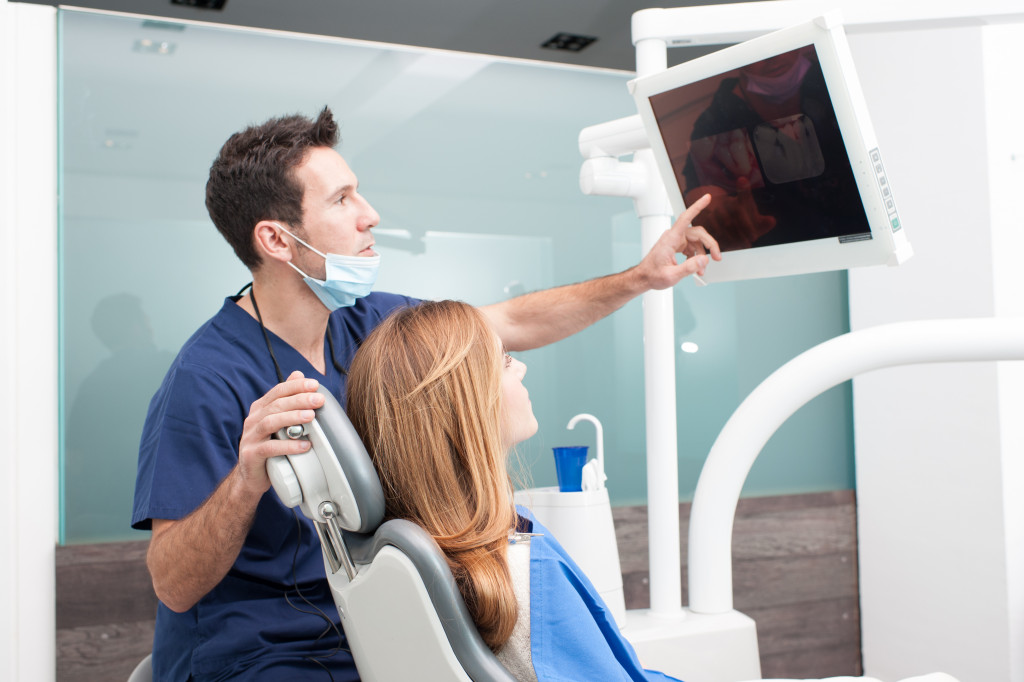- Digital X-rays are faster, emit less radiation, and provide clear images for diagnosis and treatment.
- 3D printing allows for creating custom dental implants, retainers, and dentures with greater precision.
- Intraoral cameras provide high-quality images to diagnose dental issues more accurately.
- Laser dentistry provides greater precision with reduced risk of damage to healthy tissues.
- AI and ML help make diagnoses more precise, improve treatment planning, streamline workflows, enhance patient experience, and lower costs.
The field of dentistry has made significant strides over the years with the introduction of new technologies. Technology has improved dental care, making it faster, more precise, and less intrusive for patients.
This article will explore some technological advancements in modern dental practices and how they have improved patient care. Whether you’re an individual keen on dental hygiene or a dentist trying to stay up-to-date with the latest advancements, this article is for you:
Digital X-rays
Traditionally, dentists relied on the use of X-rays to diagnose dental problems. However, with digital X-rays, dental care has become more efficient and less invasive for patients. Digital X-rays don’t require bulky films and are much faster than traditional X-rays.
Additionally, they emit less radiation, making it safer for patients. They also provide a clear and detailed image of the teeth, which helps diagnose and treat accurately.
3D Printing
One of the most exciting advancements in modern dental practices is 3D printers. These printers can create dental implants, retainers, and even dentures with greater precision and accuracy.
The ability to create custom designs for each patient has explicitly revolutionized the dental industry. This technology has significantly boosted the success rate of complex dental procedures, which has increased patient satisfaction.
Intraoral Cameras

Intraoral cameras are tiny cameras that dentists use to capture images from inside the patient’s mouth. They provide clear, high-quality photos and can be magnified many times to help dentists identify issues in greater detail.
Modern dentists use intraoral cameras to diagnose and treat cavities, cracks, chips, and other dental issues more accurately. This technology has dramatically improved the accuracy of diagnostics and treatment plans.
Laser Dentistry
Laser technology is rapidly becoming more popular in dental practices. This technology provides greater precision and has reduced the risk of damage to healthy tissues and gums during dental procedures. Laser technology provides more accurate results while reducing healing time, which saves patients time and money.
Artificial Intelligence and Machine Learning
Artificial intelligence (AI) and machine learning (ML) have become buzzwords in numerous industries. Their impact is now felt in dentistry, where practitioners are reaping the benefits of these technologies.
Making Diagnoses More Precise
AI and ML are being used to help dentists make more accurate diagnoses. For example, they can help detect cavities, gingivitis, and other oral conditions that might be hard to see with the naked eye. Additionally, these technologies allow dentists to track changes in the mouth over time, reducing the risk of misdiagnosis.
Improving Treatment Planning
AI and ML can also assist dentists in planning treatments. Algorithms can be developed to create customized treatment plans specific to each patient’s needs. Such technologies can consider multiple factors, including a patient’s age, oral health history, and dental habits.
Streamlining Workflows
AI and ML can help dental practices run more efficiently by streamlining workflows. The technologies can automatically analyze patient data and prepare reports that can be used to identify treatment options, monitor progress, and enhance patient engagement. This can save dentists time and money, allowing them to focus on their patients.
Enhancing Patient Experience

AI and ML can enhance the patient experience by improving communication between practitioners and patients. For example, chatbots can be used to answer patient questions or provide feedback on treatment options. Additionally, virtual reality technologies can create immersive patient experiences that make dentistry more enjoyable.
Lowering Costs
AI and ML can help reduce costs by minimizing the need for expensive equipment and personnel. For example, the technologies can optimize resources such as dental drills and other tools, reducing waste. Additionally, they can reduce the need for costly procedures that may not be necessary.
Final Thoughts
In summary, the advancements in dental technology have improved patient care over the years. They have made dental procedures faster, more precise, and less invasive for patients, increasing satisfaction levels. By integrating these technologies into the practice, dentists can deliver better results and improve the patient experience. Harnessing the power of technology has become crucial in modern dental practices, and dentists must continue to incorporate these advancements to meet the evolving needs of their patients.
